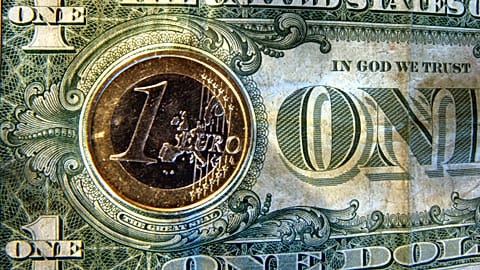German and French inflation numbers both fell in March, primarily due to declining food and energy prices, leading to more hopes of inflation soon returning to the ECB’s 2% target.
Germany’s year-on-year inflation for March 2024 was released on Friday morning, clocking in at 2.2%, according to the Federal Statistical Office. This was a step down from February’s 2.5%, while also being the lowest figure since May 2021.
This was mainly due to food inflation seeing the first decline since February 2015, sliding to -0.7% in March, from 0.9% in the previous month. Similarly, energy prices also fell at a faster rate, to -2.7% from -2.4% in February.
Goods inflation also reduced to 1.0% in March, down from 1.8% in the previous month. However, services’ prices increased from 3.4% in February, 3.7% in March.
Core inflation, which does not take into consideration energy and food prices, dropped to its lowest figure since June 2022 in March, at 3.3%.
Month-on-month inflation in March inched up 0.4%, the same as in February.
Germany’s March inflation report has fueled more investor hopes that the country’s inflation will soon come down to the European Central Bank’s 2% target. This could go a long way in helping support economic recovery and reduce the cost of living in Europe’s second-largest economy.
French inflation falls to lowest since September 2021
The French year-on-year inflation report for March 2024 also came out on Friday, coming in at 2.3%, according to INSEE France, which was the lowest number since September 2021. It was also a considerable reduction from 3% in February, and below analyst expectations of 2.6%.
As in Germany, France’s inflation decrease was also primarily due to food prices coming down, clocking in at 1.7% in March, down from 3.6% in February. Services inflation fell to 3% from 3.2% in the previous month, while energy inflation slid significantly to 3.4% from 4.3% in February.
Inflation for manufactured products also fell to 0.1% from 0.4% in the previous month, with tobacco prices following the same trend, declining from 18.7% in February to 10.7% in March.
Month-on-month, French inflation rose 0.2% in March, from 0.8% in March, primarily because of falling energy prices.
Spain’s March inflation print rebounds from six-month lows
In March, inflation in Spain saw an uptick from the six-month lows seen in February, clocking in at 3.2%, up from the previous month’s 2.8%, according to the National Statistics Institute (INE). This was mainly due to increasing utilities and house prices, which saw a rise of 1.5% from February’s -2.7%.
Transportation prices also surged to 2.9% from 2.4% in the previous month, while culture and recreation prices advanced 3.8% in March from 2.8% in February. However, prices fell for food and non-alcoholic beverages, to 4.3% from 5.3% in February.
Month-on-month, March inflation rose 0.8% from February.
Spain has been dealing with comparently sticky-high inflation in the last few months, due to services mark-ups being relatively elevated, as well as productivity falling especially in the open sector.


















